1. English Cottage Overload

Yes, the overflowing English cottage garden used to be the pinnacle of charm—back in 2015. But in 2025, it’s seen as a bit of a maximalist hangover, especially when it’s done without biodiversity in mind. Dense plantings of foxgloves, delphiniums, and roses may look nostalgic, but they’re often terrible for local ecosystems if not adapted to native species. Over-planting without a sustainability plan just isn’t cutting it anymore.
Garden designers today are leaning toward regionally sensitive planting with native perennials and grasses, not just imported “romantic” flora. Overstuffed beds now signal a lack of awareness about pollinator support and water conservation. Plus, let’s be honest—those borders are high-maintenance and scream, “I haven’t updated my gardening Pinterest board since the Obama years.” If your garden looks like it came from an Edwardian postcard, it might be time to evolve.
2. Decorative Gravel Desserts
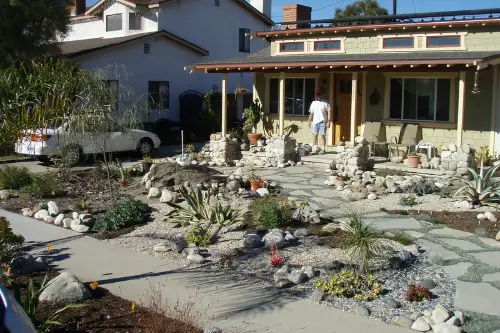
There was a moment when “zero-maintenance” gravel yards felt modern—clean, geometric, and drought-tolerant. But that trend has veered hard into the realm of lifeless and ecologically empty. Without native plants, gravel gardens create heat islands and destroy habitats for pollinators and beneficial insects. And with climate resilience top of mind, sterile landscapes just look outdated.
A gravel-only yard also tends to ignore stormwater runoff issues, something more homeowners are now aware of. Today, rain gardens, bioswales, and permeable planting beds are favored over stone slabs and endless pea gravel. If your “garden” looks like a parking lot for succulents, it’s time to rethink your strategy. A sustainable garden should breathe and move, not just crunch underfoot.
3. Perfectly Clipped Boxwood Hedges
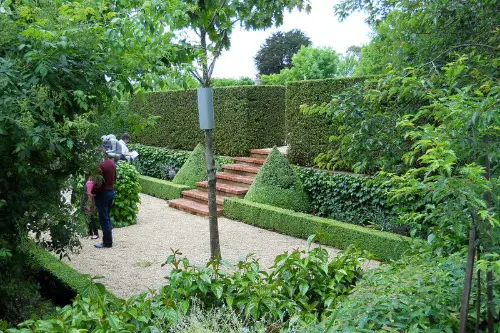
Impeccable boxwood topiary once screamed “refined taste,” but in 2025 it says something else: high water, high pesticide, and high maintenance. With boxwood blight and pest infestations spreading across the U.S. and Europe, clinging to these hedges feels oblivious. Gardeners are moving toward more diverse hedging with multi-season interest and native benefits. Uniform green walls are being replaced by textural, wildlife-friendly alternatives.
Shrubs like inkberry holly or ninebark offer the same structure with fewer ecological costs. Plus, those sharp geometric shapes clash with the more fluid, naturalistic styles that are in vogue. A hedge that looks like it came from Versailles feels out of place in a world focused on resilience and climate adaptation. So unless you’re hosting Marie Antoinette, skip the manicured monotony.
4. Artificial Turf Lawns

Ten years ago, artificial turf felt like the ultimate hack: lush green all year, no mowing, no mess. But in 2025, it reads as a red flag for environmental disregard. Synthetic grass blocks soil regeneration, overheats surrounding areas, and is often made of petroleum-based plastics that degrade into microplastics. Cities from California to the UK are starting to regulate or outright ban it in residential zones.
Today’s eco-conscious gardener opts for xeriscaping, native meadows, or clover lawns that require less water and support local biodiversity. If your lawn doesn’t support a bee or bird, it’s no longer considered “low-maintenance”—just low-awareness. Add the fact that turf retains heat up to 60°F hotter than real grass, and it’s basically a climate faux pas. In 2025, a fake lawn might as well be a “No Nature Welcome” sign.
5. Japanese Maple Obsession in the Wrong Zones

There’s no denying the beauty of a Japanese maple, but when planted in hot, dry zones, it signals form over function. These trees struggle in increasing heat waves and are often dependent on irrigation or shade structures to survive. In 2025, sticking them in full-sun gardens in Arizona or inland California just looks out of touch. It’s a visual red flag that sustainability took a back seat to aesthetics.
Native trees like redbuds, manzanitas, or serviceberries offer seasonal color and thrive with fewer resources. Designers are now focusing on climate-matching their plant palette, rather than importing fragile stars that can’t handle the weather. A garden should be a living ecosystem, not a bonsai exhibit melting in the sun. When the tree needs its own parasol, it’s probably in the wrong zip code.
6. Overused Black Mulch

It might seem harmless, but that glossy black mulch you see in big box stores is often dyed with chemicals and made from shredded pallets. It doesn’t break down well, doesn’t feed the soil, and in many cases, repels beneficial insects. In 2025, gardeners know that the color and composition of mulch matter more than ever. Organic mulch like shredded bark, leaf mold, or even compost is far healthier and far trendier.
Black mulch also heats up soil temperatures, which can stress out plants, especially in sunny beds. It’s more about appearance than actual plant health—and that’s exactly the wrong priority now. When you see a freshly laid black mulch bed, it’s like spotting a gas-guzzling SUV in an EV parking spot. It’s flashy, but the optics are terrible.
7. Plastic Planters That Pretend to Be Ceramic
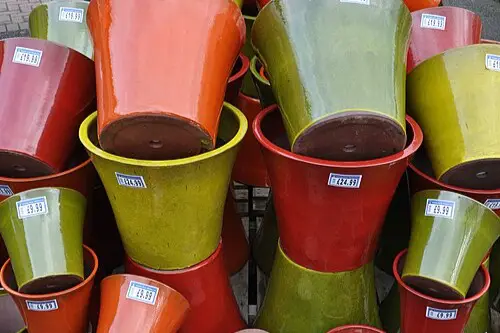
We all know those too-shiny, too-light faux-ceramic pots that fade in the sun and crack in the cold. They’re often sold as “durable” or “UV-resistant,” but they look cheap and degrade quickly. In 2025, they scream “big box store garden aisle panic buy.” Authentic, natural materials like terra cotta, stone, or responsibly sourced wood are the go-to now.
Plastic planters also retain heat poorly and can stress out roots in extreme temperatures. Plus, most aren’t recyclable, and they break down into microplastics over time. If your pot weighs less than your watering can, it’s probably doing your plants a disservice. The garden of today values craftsmanship and sustainability over convenience and illusion.
8. Rock Waterfalls in Suburbia
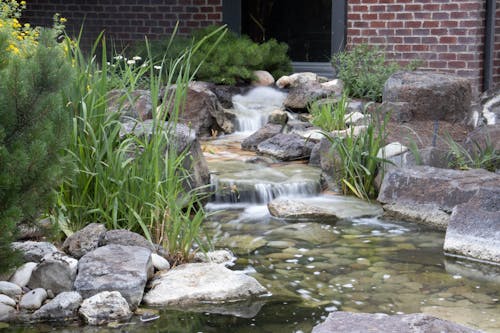
Remember those towering rock waterfalls with hidden pumps and a fake koi pond? They’re now mostly seen as a relic of early 2000s landscaping excess. These features are energy-intensive, prone to leaks, and often disrupt natural drainage patterns. In 2025, a waterfall in a suburban backyard reads more “theme park” than “serenity.”
Water features are still in, but they’re now subtle—like bird-friendly fountains or natural stone basins that collect rain. People want quiet biodiversity, not mechanical humming and algae treatments. If your water feature needs a manual, a weekly scrub, and a chemical tab, it’s not bringing nature in—it’s faking it. The trend is “pondlet,” not “mini Niagara.”
9. Annuals-Only Beds

Beds filled exclusively with annuals like impatiens or petunias were once a staple for color-hungry gardeners. But they’re water-hungry, fertilizer-dependent, and do little for wildlife. In 2025, having no perennials, natives, or shrubs in the mix signals a dated, unsustainable approach. Flashy color alone isn’t enough anymore—it’s about layered planting that supports the whole ecosystem.
Modern beds mix long-blooming natives, grasses, and even edibles for year-round function. And yes, you can still have color—but it should come with purpose. If your garden goes blank after the first frost, it’s time to diversify. Gardens should evolve with the seasons, not vanish with the heat.
10. Hyper-Themed “Instagram Gardens”
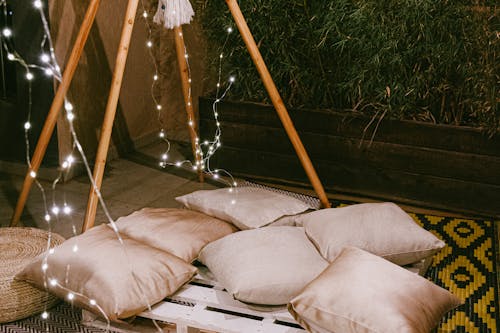
You’ve seen them: desert-chic with pink flamingos, tropical oases in temperate zones, or boho setups with hammocks and hanging succulents in shady yards. These ultra-styled gardens may look good in a post, but they often ignore site-specific needs. In 2025, hyper-curated aesthetic gardens come off as performative and disconnected from place. A mismatched theme doesn’t age well—it just screams, “This was for the ‘gram.”
More gardeners are embracing authenticity and site responsiveness over trend-chasing. A good garden now reflects its climate, soil, and community—not a mood board from a furniture catalog. If you need props to make it interesting, it’s not really working. It’s time to grow something that lives beyond a scroll.
This post 10 Garden Styles That Instantly Signal You’re Out of Touch in 2025 was first published on Greenhouse Black.
